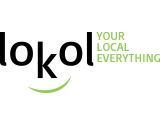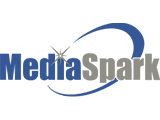“At first, it was tough adjusting to sudden changes and new experiences, like the food or living in close quarters, while also learning crucial lab and field work skills,” said Andres. “Coming from the dry Saskatchewan Prairies to a humid, treeless island in the Atlantic Ocean is also quite jarring in itself.”
The pair of researchers are students in the Department of Biology in the College of Arts and Science at USask and work in the McLoughlin lab, run by associate professor Dr. Philip D. McLoughlin (PhD). As a PhD student, Crozier is studying Sable Island’s feral horses— descendants of a small group of horses left on the island in the 18th century. The isolated population offers researchers the unique opportunity to study the horses’ genetics, behaviour, and social structures and gather information about their microbiomes.
Crozier is studying how horse health is influenced by the parasites that live inside their digestive system. While it’s common for horses and livestock to have parasites, she said the feral horses of Sable Island aren’t receiving deworming treatments like their domesticated cousins. This allows Crozier to get more insight into how the parasites impact their health.
“I’m looking at how traits like longevity and reproduction are influenced by the parasites the horses have, and this kind of research involves field work where we need to go and collect samples from the population,” said Crozier.
While her research focuses on a unique population of horses located in a unique landscape, Crozier said the impacts are far reaching and can help us better understand how parasites affect wildlife and livestock across Canada, including in Saskatchewan.
“What we are doing is very fundamental and allows us to understand how gut parasites impact things like reproduction, which can be applied to other large animals,” said Crozier.
While Crozier is no stranger to field research—her undergraduate degree sent her to the badlands in Saskatchewan, while her master’s degree took her to new heights catching bighorn sheep in the Alberta Rockies—Sable Island was a brand-new experience for the young researcher.
“There is something different about the field work on Sable,” Crozier said. “I don’t know if it’s the isolation or what, but making connections with other people on the island was really extra special and rewarding.”
A typical field day for the Sable Island crew starts at 7:30 am, processing the parasitic worms gathered from field samples which have been incubating for six days. As soon as the lab work ends, Crozier, Andres and other members of the team hit the field to collect more samples to incubate. To cover the island, they often split up and venture out on their own to pick up samples and note the horses they come across.
After a day in the field, the team reconvenes for more lab work and some down time when they share meals and talk with other researchers, like Dalhousie PhD student Justine Ammendolia, who are conducting their own research on the island.
Ammendolia said she felt immediately welcomed by the USask crew.
“USask is an established research group on the island. I felt like a stray on Sable, but I quickly adopted into the social circle of the USask herd,” said Ammendolia. “Field bonding is a really powerful thing. I would have never met these people had I not found them in the middle of nowhere on this slice of sand.”
Crozier, Andres and Ammendolia wrote about the benefits of supporting other researchers in the field in an article recently published in Nature’s Career Column. They recognize the importance of institutional collaboration, but also emphasize the power of friendship, and hope to inspire other early-career researchers to make these connections in the field.
Together, we will undertake the research the world needs. We invite you to join by supporting critical research at USask.





0
Log In or Sign Up to add a comment.- 1
arrow-eseek-eNo items to display